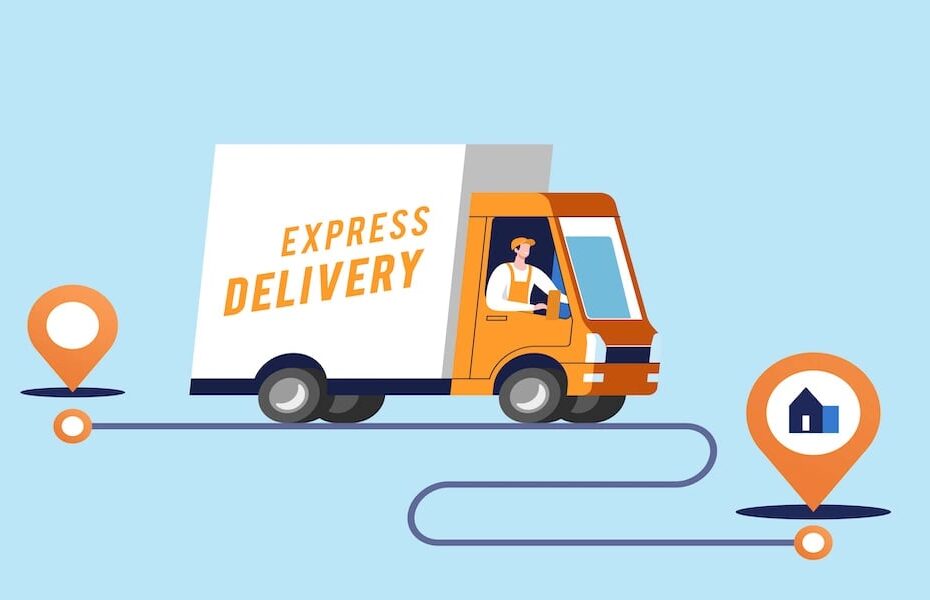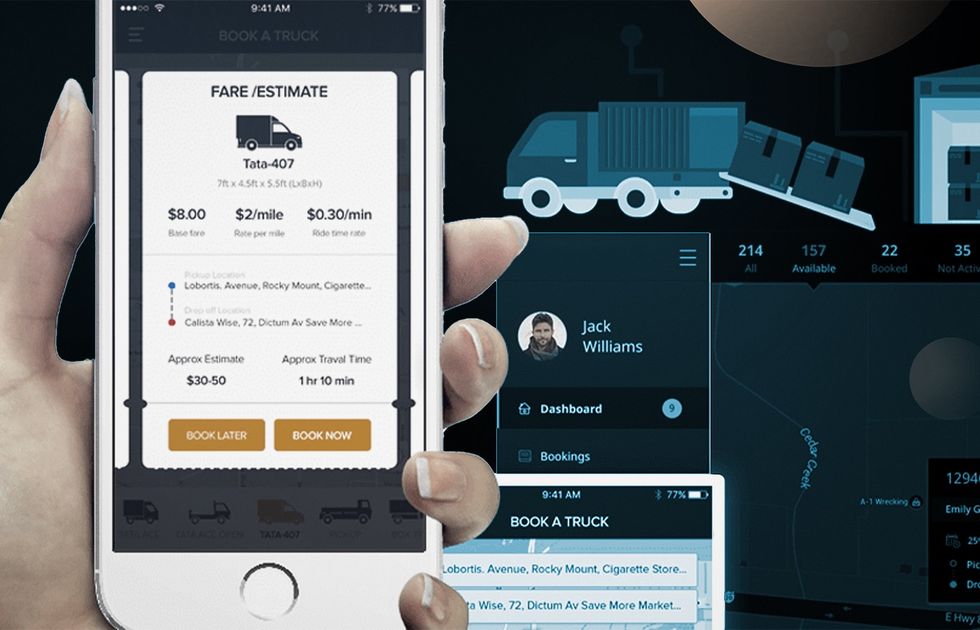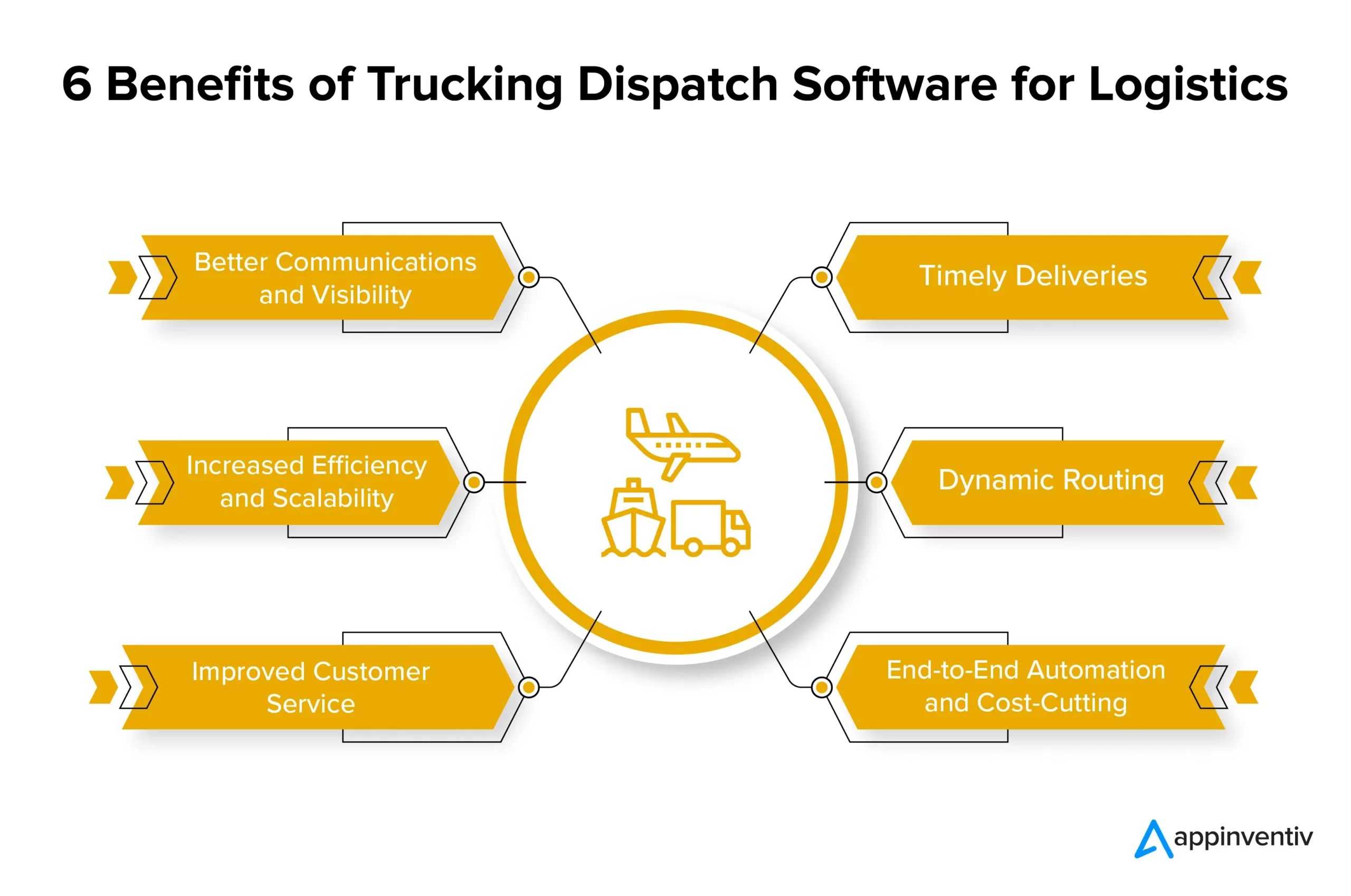Implementing trucking dispatch software requires creating a strong implementation team, setting clear objectives and goals, evaluating different software options, demoing the platforms, carefully planning the transition phase, defining integration requirements, and allocating staff appropriately for go-live. This digital solution helps track and schedule truck drivers’ shifts, plan routes, and collect valuable data for optimizing future routes.
By following these best practices and tips, businesses can effectively and efficiently manage their trucking operations. Implementing trucking dispatch software is essential for modern businesses looking to streamline their logistics and transportation operations. This digital solution offers a range of benefits, including improved route planning, better driver management, and enhanced efficiency.
However, implementing this software requires careful planning to ensure a smooth transition and maximum success. We will explore some tips and best practices for implementing trucking dispatch software. By following these guidelines, businesses can effectively integrate this software into their operations and reap the many benefits it offers. From creating a strong implementation team to defining integration requirements, we will provide valuable insights on how to make the most out of trucking dispatch software implementation.

Credit: hiring.monster.com
Benefits Of Implementing Trucking Dispatch Software
Implementing trucking dispatch software can bring numerous benefits to your transportation business. This powerful digital solution is designed to streamline operations, improve efficiency, increase visibility and transparency, enhance customer service, and optimize route planning. Let’s take a closer look at each of these benefits:
Streamlining Operations
Trucking dispatch software is specifically built to streamline your operations by automating key tasks and processes. With this software, you can easily manage and track your fleet, assign jobs to drivers, and monitor delivery status in real-time. By centralizing all the information and processes in one place, you can eliminate manual errors, reduce paperwork, and save valuable time and resources.
Improving Efficiency
Efficiency is crucial in the trucking industry, and dispatch software can significantly boost your operational efficiency. With automated job scheduling and dispatching, you can ensure that each job is assigned to the right driver with the appropriate qualifications and availability. Real-time updates and alerts will keep your drivers informed about any changes and help them make timely decisions. By minimizing idle time, reducing unnecessary mileage, and improving communication, you can optimize your overall efficiency.
Increasing Visibility And Transparency
Trucking dispatch software provides you with increased visibility and transparency throughout your operations. You can easily track the location of your vehicles, monitor their progress, and receive notifications on arrival and departure times. This level of visibility empowers you to make informed decisions, quickly address any issues or delays, and provide accurate updates to your customers. The transparency offered by the software can also help build trust and strengthen your relationships with customers and partners.
Enhancing Customer Service
Customer service is a top priority in the trucking industry, and dispatch software can greatly enhance your ability to deliver exceptional service. With real-time tracking and notifications, you can provide accurate and up-to-date information to your customers regarding their deliveries. You can proactively communicate any delays or issues, enabling them to make alternative arrangements or manage their expectations. By offering superior customer service, you can build customer loyalty, generate positive reviews, and attract new clients.
Optimizing Route Planning
Route planning is a critical aspect of trucking operations, and dispatch software can optimize this process. The software utilizes advanced algorithms to calculate efficient routes, taking into account factors such as traffic, distance, and fuel consumption. With optimized route planning, you can minimize the time and expense associated with each trip, reduce fuel consumption, and improve overall efficiency. This not only benefits your bottom line but also reduces your environmental impact.

Credit: acropolium.com
Key Considerations For Implementing Trucking Dispatch Software
When implementing trucking dispatch software, there are key considerations to keep in mind. Create a strong implementation team, evaluate different software options, plan the transition phase carefully, and define integration requirements to ensure a successful implementation process.
Implementing trucking dispatch software is a crucial step for optimizing operations and improving efficiency in the transportation industry. However, it’s important to carefully consider certain key factors before implementing such software in your business. These considerations include identifying your specific business needs, choosing the right software, ensuring compatibility and integration, providing training and onboarding, and measuring success and return on investment (ROI).
Identifying Business Needs
Before selecting and implementing trucking dispatch software, it’s essential to identify your specific business needs. This includes analyzing your current dispatch processes, understanding pain points, and identifying areas where software can bring the most value. Whether you require route optimization, real-time tracking capabilities, or load management features, clearly defining your requirements will help you choose the most suitable software for your business.
Choosing The Right Software
Choosing the right trucking dispatch software can have a significant impact on your operations. Consider factors such as scalability, ease of use, integration capabilities, and the reputation of the software provider. Look for a solution that offers the features and functionalities that align with your business objectives and can adapt to your future needs.
Ensuring Compatibility And Integration
When implementing trucking dispatch software, compatibility and integration with your existing systems and processes are crucial. Ensure that the software seamlessly integrates with your transportation management system, ERP, customer relationship management, and other relevant platforms to streamline operations and avoid data silos. This will enable smooth information flow and enhance overall efficiency.
Training And Onboarding
Proper training and onboarding are essential to ensure a smooth transition to the new software. Consider implementing a comprehensive training program for your staff to familiarize them with the software’s functionalities and maximize its use. This can be done through on-site training, online tutorials, or user documentation. Encourage your team to actively participate in the learning process and provide ongoing support to address any challenges or questions that arise.
Measuring Success And Roi
Once trucking dispatch software is implemented, it’s important to establish metrics and key performance indicators (KPIs) to measure its success and return on investment. Monitor factors such as improved on-time deliveries, reduced fuel costs, enhanced customer satisfaction, and increased overall operational efficiency. Regularly evaluate the software’s impact on your business and make necessary adjustments to optimize its usage and drive better results.
Best Practices For Implementing Trucking Dispatch Software
For effective implementation of trucking dispatch software, create a strong implementation team, set clear objectives and goals, evaluate different software options, demo the platforms, carefully plan the transition phase, and define and prioritize integration requirements. Ensure proper allocation of staff for a successful go-live.
Forming An Implementation Team
Implementing trucking dispatch software is a crucial step towards optimizing operations, improving efficiency, and enhancing customer satisfaction. To ensure a successful implementation, one of the first steps is to form an implementation team. This team should consist of individuals from various departments, including representatives from dispatch, operations, IT, and management.
The team should have clear roles and responsibilities and should be committed to working together towards a common goal. Having a dedicated implementation team ensures effective communication, collaboration, and accountability throughout the process.
Setting Objectives And Goals
Before implementing any trucking dispatch software, it is essential to set clear objectives and goals. These objectives should align with the overall business goals and address specific pain points and challenges faced by the organization. It is important to define measurable Key Performance Indicators (KPIs) to track progress and evaluate the success of the implementation.
Setting objectives and goals provides a roadmap for the implementation process, allowing the team to stay focused and ensure that the software meets the organization’s needs and expectations.
Evaluating Software Options
When it comes to selecting the right trucking dispatch software, thorough evaluation is crucial. The implementation team should evaluate multiple software options, considering factors such as functionality, scalability, ease of use, and integration capabilities.
A comprehensive evaluation process may include conducting software demos, gathering feedback from end-users, and researching customer reviews and ratings. This evaluation ensures that the chosen software aligns with the organization’s specific requirements and offers the necessary features and functionalities to streamline trucking operations.
Planning The Transition Phase
The transition phase plays a vital role in implementing trucking dispatch software smoothly. It is important to plan this phase carefully to minimize disruptions and ensure a seamless transition from the existing processes to the new software.
During the transition phase, it is recommended to conduct training sessions for the users to familiarize them with the software’s features and functionalities. This training should be tailored to different user roles and should address any concerns or questions they may have. Additionally, creating a timeline, setting milestones, and assigning responsibilities helps track progress and ensures a successful transition.
Prioritizing Integration Requirements
Integration is a critical aspect of implementing trucking dispatch software. It is important to prioritize integration requirements and ensure seamless integration with existing systems and processes.
The implementation team should thoroughly assess integration needs, identify potential challenges, and work closely with the software provider to develop an integration plan. This ensures that the software can communicate and exchange data with other systems such as CRM, ERP, and fleet management software, enhancing overall operational efficiency.
Implementing trucking dispatch software requires careful planning, collaboration, and attention to detail. By following these best practices, organizations can optimize their operations, improve productivity, and drive better results in the competitive trucking industry.

Credit: datamyte.com
Tips For Successful Implementation
Implementing trucking dispatch software successfully requires creating a strong implementation team, setting clear objectives and goals, evaluating different software options, demoing the platforms, carefully planning the transition phase, and defining and prioritizing integration requirements. It is important to allocate staff appropriately to ensure a smooth go-live process and optimize future routes.
Implementing trucking dispatch software can streamline operations and enhance efficiency for trucking companies. However, a successful implementation requires careful planning and execution. Here are some essential tips to ensure a smooth transition and maximize the benefits of your new software:Allocate Resources Appropriately
Properly allocating resources is crucial for a successful implementation. This includes assigning dedicated staff members to oversee the implementation process and provide ongoing support. Additionally, ensure that your hardware and network infrastructure can handle the software requirements for smooth operations. It’s important to allocate enough time and budget for training and system optimization. This will ensure that your team is well-prepared and confident in using the new software. Consider creating a project plan to outline key milestones and timelines, allowing for flexibility and adjustments along the way.Engage And Train Staff
Staff engagement and training are essential for a smooth transition to the new trucking dispatch software. Begin by communicating the benefits of the software to your team, addressing any concerns or resistance they may have. Clearly explain how the software will improve their workflow and overall efficiency. Provide comprehensive training sessions to help your staff understand the functionalities and features of the software. This can include both initial training and ongoing support to address any questions or issues that arise. Consider creating user manuals or video tutorials that can serve as a reference guide for your team.Communicate And Seek Feedback
Effective communication is key throughout the implementation process. Keep your team informed about the progress and any changes that may occur. Regularly communicate the benefits and improvements achieved through the use of the software to boost morale and maintain enthusiasm. Encourage open communication with your staff to gather their feedback and address any concerns. This can help identify areas for improvement and optimize the software’s performance. Foster a culture of continuous improvement and involve your team in decision-making processes, ensuring their buy-in and commitment to the software.Monitor And Adjust
After the initial implementation, closely monitor the software’s performance and its impact on your operations. Track key metrics such as driver productivity, delivery times, and customer satisfaction to evaluate the software’s effectiveness. Regularly review and analyze the data collected by the software to identify opportunities for further optimization. Continuously communicate with your team and gather feedback on any challenges or areas that require adjustment. This iterative approach will help you fine-tune the software and ensure its alignment with your business goals.Collaborate With Software Providers
Establish a collaborative relationship with your software provider to maximize the benefits of your trucking dispatch software. Regularly communicate with them, share your feedback and address any technical issues promptly. Stay updated on software updates and new features that can enhance your operations. Work closely with your software provider to customize the software to your specific needs. This can include integrating it with other systems you use or adding additional functionalities that align with your business requirements. By leveraging the expertise and support of your software provider, you can unleash the full potential of your trucking dispatch software. Implementing trucking dispatch software can be a transformative step for your trucking company. By following these tips for successful implementation, you can ensure a seamless transition and unlock the full potential of your new software to enhance efficiency and streamline your operations.Case Studies: Successful Implementation Of Trucking Dispatch Software
When it comes to implementing trucking dispatch software, it’s essential to learn from companies that have successfully implemented such solutions. In this section, we will explore case studies of companies that have streamlined their delivery operations, improved on-time performance, reduced fuel costs, enhanced customer satisfaction, and increased fleet utilization through the implementation of trucking dispatch software.
Company A: Streamlining Delivery Operations
Company A, a reputable logistics company, faced challenges in managing their complex delivery operations, resulting in delayed deliveries and customer dissatisfaction. By implementing trucking dispatch software, they were able to streamline their operations effectively.
- Automated dispatching process to assign drivers to appropriate routes based on factors like proximity, load type, and availability.
- Real-time tracking and monitoring of deliveries, allowing the company to provide accurate delivery updates to customers.
- Optimized route planning to minimize fuel consumption and reduce overall delivery time.
- Improved communication between dispatchers and drivers, ensuring smooth coordination throughout the delivery process.
Company B: Improving On-time Performance
Company B, a well-known transportation company, struggled with on-time performance due to inefficient dispatching and communication processes. However, after implementing trucking dispatch software, they experienced a significant improvement in their on-time performance.
- Automated dispatching system that assigns drivers with the most suitable routes, taking into account variables like traffic conditions and order priority.
- Real-time alerts and notifications for dispatchers and drivers regarding any changes or delays in delivery schedules.
- Efficient load planning and load optimization to ensure optimal use of resources and reduce wasted miles.
- Enhanced communication channels between dispatchers, drivers, and customers, improving overall coordination and response times.
Company C: Reducing Fuel Costs
Company C, a large fleet operator, was concerned about the rising fuel costs and the negative impact it had on their profitability. They implemented trucking dispatch software, which helped them significantly reduce their fuel expenses.
- Optimized route planning algorithms that prioritize the most efficient routes, considering factors like distance, traffic patterns, and fuel consumption.
- Real-time fuel monitoring and analytics, allowing the company to identify fuel-wasting activities and implement corrective measures.
- Integration with fuel card systems to track and manage fuel consumption, supporting proactive cost-saving measures.
- Regular performance analysis to identify opportunities for fuel efficiency improvement and fleet optimization.
Company D: Enhancing Customer Satisfaction
Company D, a leading delivery service provider, recognized that customer satisfaction is paramount in their industry. By implementing trucking dispatch software, they strengthened their ability to meet and exceed customer expectations.
- Real-time tracking and visibility into delivery status, allowing customers to know the exact location and estimated arrival time of their shipments.
- Automated notifications and delivery updates sent to customers, ensuring timely and accurate communication.
- Efficient load planning and routing to minimize delivery delays and optimize delivery times.
- Improved customer service capabilities through enhanced communication between dispatchers and customers, resolving queries or issues promptly.
Company E: Increasing Fleet Utilization
Company E, a growing logistics company, faced challenges with underutilized fleets, leading to increased operational costs. However, by implementing trucking dispatch software, they were able to optimize fleet utilization and maximize efficiency.
- Advanced fleet management tools for monitoring and analyzing fleet performance, allowing the company to identify areas of improvement and optimize resource allocation.
- Automated load assignment and optimization, ensuring that each vehicle is utilized to its maximum capacity.
- Real-time tracking and monitoring of fleet activity, enabling timely adjustments and proactive decision-making.
- Data-driven insights and analytics to identify patterns and trends that can further improve fleet utilization and resource allocation.
Frequently Asked Questions Of Implementing Trucking Dispatch Software: Tips And Best Practices
How Do You Implement A Transportation Management System?
To implement a transportation management system, follow these steps: 1. Create a strong implementation team. 2. Create a plan with objectives and goals. 3. Evaluate different software options and demo the platforms. 4. Plan the transition phase carefully. 5. Define and prioritize integration requirements.
6. Allocate staff appropriately for go-live.
What Is The Best Dispatching Software?
The best dispatching software is a digital solution that helps managers track and schedule truck drivers’ shifts, plan routes, and collect valuable data for optimization. It provides easy management and shrinks delivery costs.
What Is Trucking Dispatch Software?
Trucking dispatch software is a digital solution that helps managers track and schedule truck drivers’ shifts, plan routes, and collect data to optimize future routes. It streamlines operations and improves efficiency.
How Many Trucks Can A Dispatcher Handle?
A dispatcher can handle multiple trucks, but the exact number depends on factors like experience, workload, and organizational structure.
Conclusion
To successfully implement trucking dispatch software, follow these best practices: carefully plan the transition phase, define integration requirements, and allocate staff appropriately for go-live. Create a strong implementation team and set clear objectives and goals. Evaluate different software options and demo the platforms before making a decision.
By following these tips, you can streamline your trucking operations, optimize routes, and improve overall efficiency. Take advantage of the benefits that trucking dispatch software offers and elevate your business to new heights of success.



